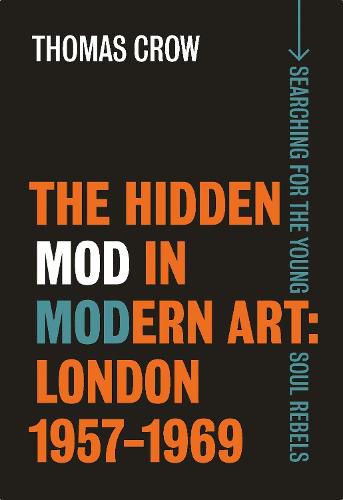Readings Newsletter
Become a Readings Member to make your shopping experience even easier.
Sign in or sign up for free!
You’re not far away from qualifying for FREE standard shipping within Australia
You’ve qualified for FREE standard shipping within Australia
The cart is loading…






An investigation of the outsized influence of the Mod subculture on key figures of the 1960s London art scene
Bonding over matters of taste and style, the ‘Mods’ of late 1950s London recognised in one another shared affinities for Italian-style suits, tidy haircuts, espresso bars, Vespa scooters and the latest American jazz. In this groundbreaking book, leading art historian Thomas Crow argues that the figure of the Mod exerted an influence beyond its assumed social boundaries by exemplifying the postwar metropolis in all of its excitement and complexity. Crow examines the works of key figures in the London art scene of the 1960s, including Robyn Denny, David Hockney, Pauline Boty, Bridget Riley and Bruce McLean, who shared and heightened aspects of this new and youthful urbanity. The triumphant arrival of the international counterculture forced both young Mods and established artists to reassess and regroup in novel, revealing formations. Understanding the London Mod brings with it a needed, up-to-date reckoning with the legacies of Situationism, Social Art History and Cultural Studies.
$9.00 standard shipping within Australia
FREE standard shipping within Australia for orders over $100.00
Express & International shipping calculated at checkout
An investigation of the outsized influence of the Mod subculture on key figures of the 1960s London art scene
Bonding over matters of taste and style, the ‘Mods’ of late 1950s London recognised in one another shared affinities for Italian-style suits, tidy haircuts, espresso bars, Vespa scooters and the latest American jazz. In this groundbreaking book, leading art historian Thomas Crow argues that the figure of the Mod exerted an influence beyond its assumed social boundaries by exemplifying the postwar metropolis in all of its excitement and complexity. Crow examines the works of key figures in the London art scene of the 1960s, including Robyn Denny, David Hockney, Pauline Boty, Bridget Riley and Bruce McLean, who shared and heightened aspects of this new and youthful urbanity. The triumphant arrival of the international counterculture forced both young Mods and established artists to reassess and regroup in novel, revealing formations. Understanding the London Mod brings with it a needed, up-to-date reckoning with the legacies of Situationism, Social Art History and Cultural Studies.